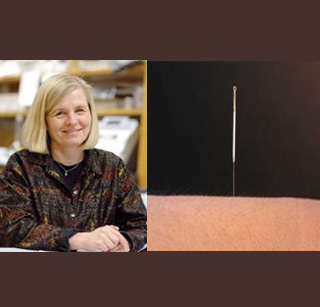
The investigators conducted an experiment on mice which enabled them to triple the beneficial effects of acupuncture. During the experiment the researchers included a medication usually recommended to treat patients with leukemia. For long it has been known that adenosine is a natural compound regulating sleep, affecting the heart and shows anti-inflammatory properties. But this research highlights the adenosine as a natural pain-killer.
“Acupuncture has been a mainstay of medical treatment in certain parts of the world for 4,000 years, but because it has not been understood completely, many people have remained skeptical. In this work, we provide information about one physical mechanism through which acupuncture reduces pain in the body,†affirmed Maiken Nedergaard, co-director of the University’s Center for Translational Neuromedicine.
It is assumed that in case of an injury the adenosine becomes active under skin and prevents nerve signals; this probably leads to lessen the pain just like lidocaine. The authors ascertained it to be very active in deeper tissues thus affected by acupuncture. The authors studied the effects of acupuncture on the peripheral nervous system. Complementing an advanced body of analysis, it suggests that when in the central nervous system, acupuncture may develop signals. These signals in turn seem to make the brain release natural pain-killing endorphins.
The procedure of acupuncture was conducted on mice revealing an irritation in one paw. The treatment was conducted for 30 minutes at the acupuncture point near the knee. During the treatment, after every five minutes very fine needles gently rotated just like a standard form of acupuncture conducted on people.
Josephine P. Briggs, M.D., director of the National Center for Complementary and Alternative Medicine at the National Institutes of Health concluded, “It’s clear that acupuncture may activate a number of different mechanisms. This carefully performed research identifies adenosine as a new player in the process. It’s an interesting contribution to our growing understanding of the complex intervention which is acupuncture.â€
The authors monitored the results and concluded that acupuncture possibly decreased the irritation by two-thirds in mice with normal functioning levels of adenosine. They further disclosed that acupuncture displayed no effect in certain ‘adenosine receptor knock-out mice.’ They analyzed that without the presence of acupuncture once the adenosine was turned on in the tissues, it decreased the level of discomfort.
Even during and after acupuncture a rise of 24 times greater adenosine levels was registered in the tissues near the needles. Once the research was concluded the authors turned their attention to determine the effects of a cancer drug called deoxycoformycin. This drug is known to make the tissue unable to get rid of adenosine. They observed that the drug tripled the amount of adenosine in the muscles, resulting to elevate the effects of acupuncture. It also appeared to triple the amount of time the treatment remained useful.
The research was published on the May 30 issue in Nature Neuroscience.
